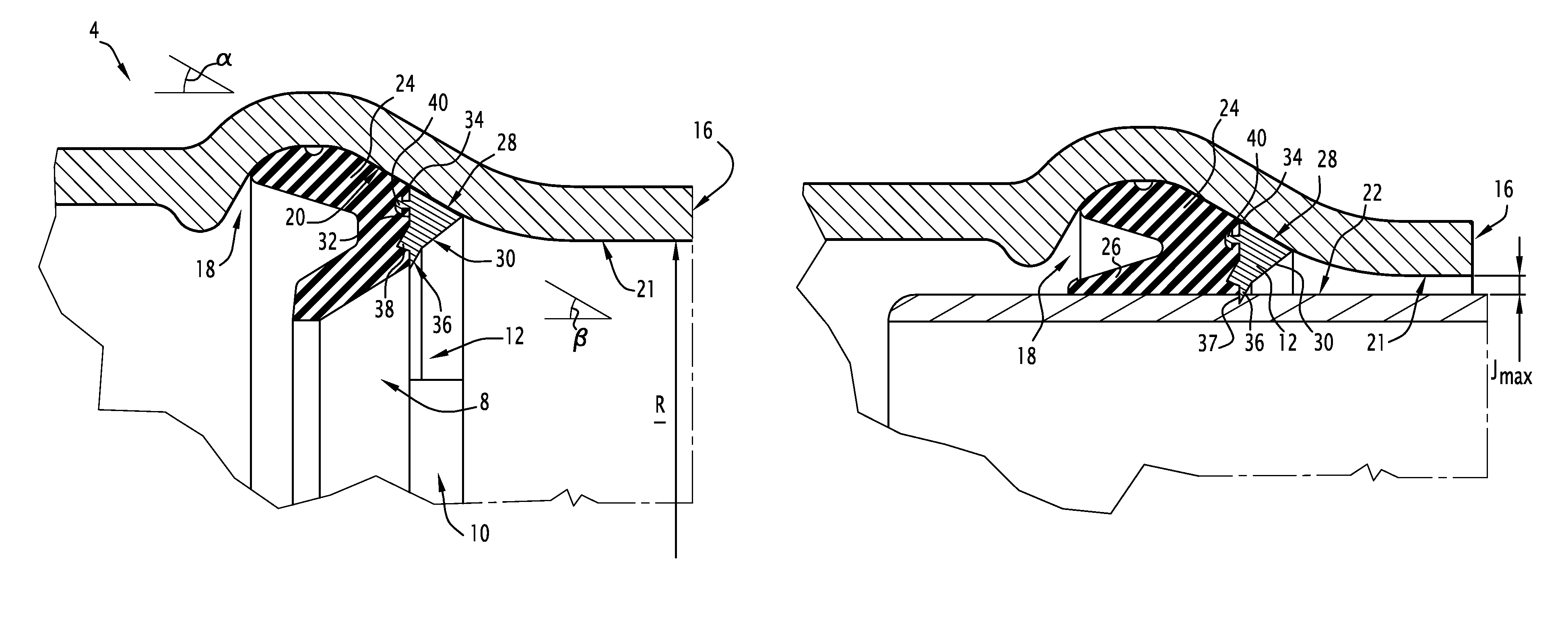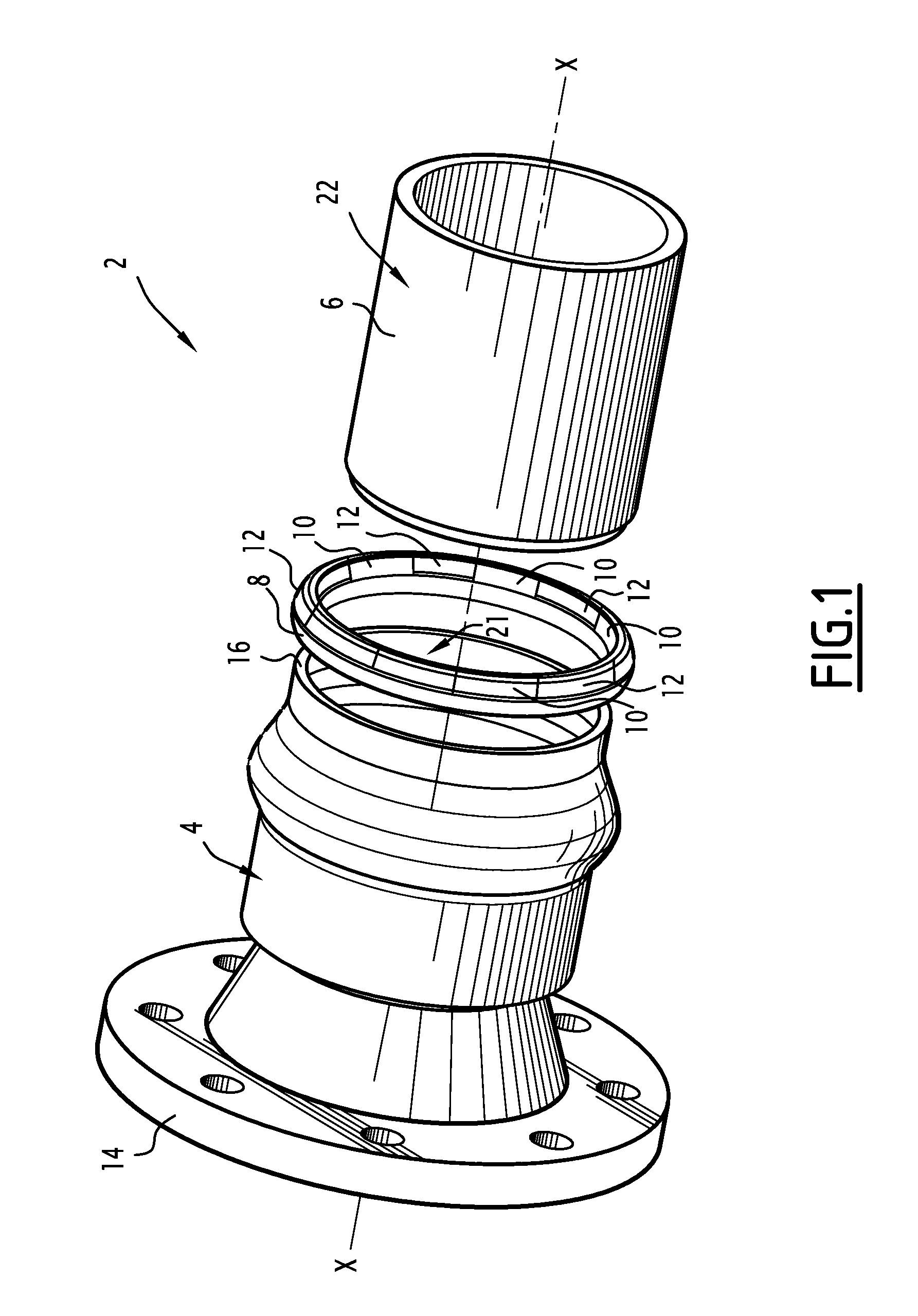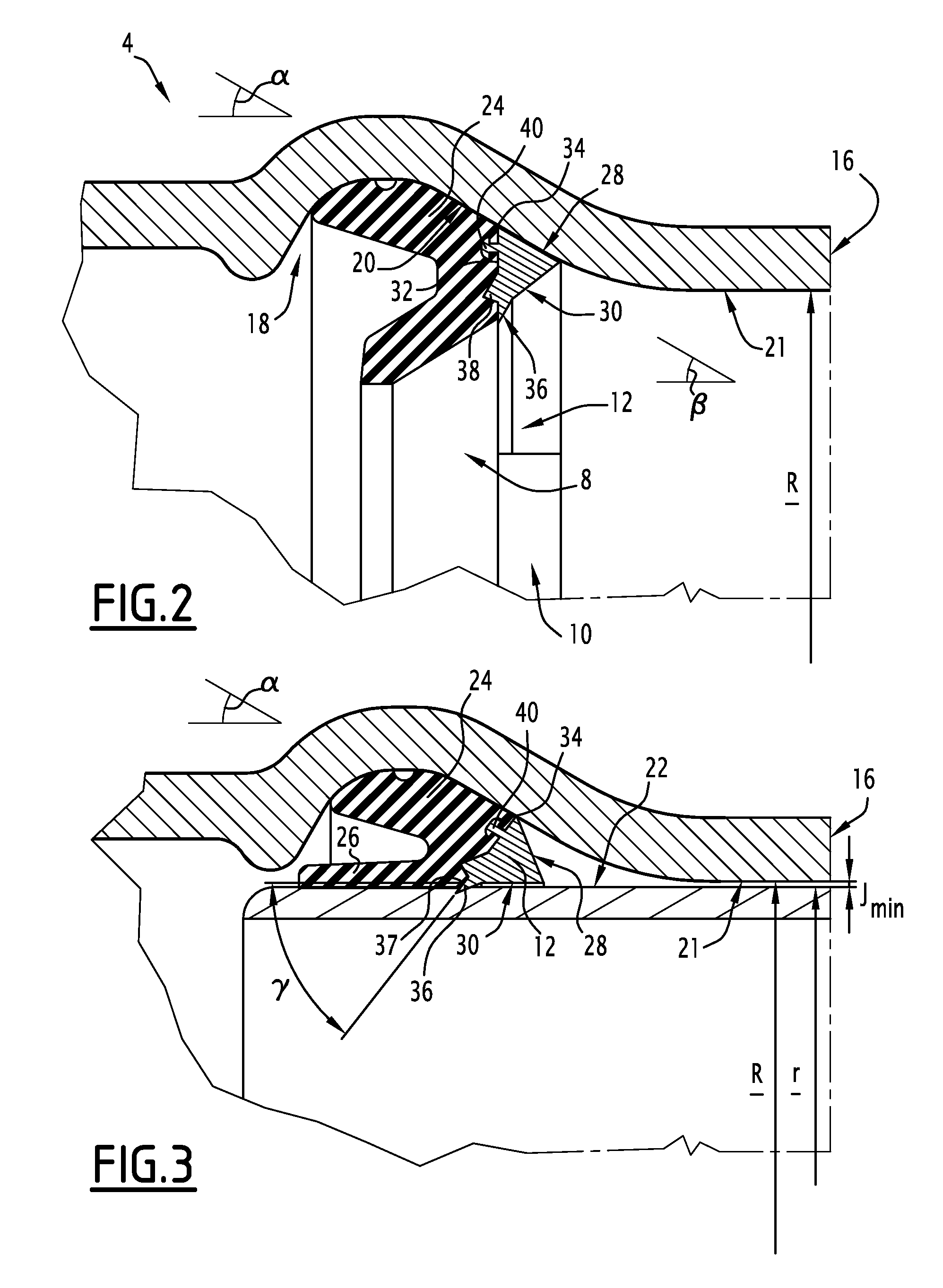Tubular joint
a tubular joint and joint technology, applied in the direction of hose connection, coupling, cable termination, etc., can solve the problems of requiring a significant fitting force for locking elements, unable to allow significant angular offset, and the seal risk of being extruded or even expelled from between the bell end and the spigot end
- Summary
- Abstract
- Description
- Claims
- Application Information
AI Technical Summary
Benefits of technology
Problems solved by technology
Method used
Image
Examples
second embodiment
[0076]FIG. 7 shows the tubular joint according to the invention which differs from the joint as follows.
[0077]Advantageously, the radially internal face 30 of the locking insert 12 is equipped with an auxiliary fixing tooth 50. this auxiliary tooth 50 is disposed remotely from the main fixing tooth 36, that is to say on the side of the free extremity 16 of the bell end 4. This auxiliary fixing tooth 50 is adapted to guarantee locking when the clearance J is small, that is to say close to the minimum clearance Jmin, while thus opposing the sliding of the main fixing tooth 36 on the external surface 22 of the spigot end 6, this risk of sliding potentially being high with slight clearance owing to the small angle of inclination to the external surface 22 of the bearing reaction in the region of this fixing tooth 36. The auxiliary fixing tooth 50 comprises an auxiliary fixing surface 52 which forms an auxiliary angle δ with the internal face 30 of the locking element. This auxiliary ang...
third embodiment
[0078] described with reference to FIGS. 8 and 9, the anti-extrusion elements 10 are inserted between the locking elements 12 which are uniformly distributed round the periphery of the seal 8. The anti-extrusion elements 10 are separated from the locking elements 12 by a circumferential spacer 56 which is integral with the seal 8, this spacer 56 having a small circumferential dimension so as not to be extruded under the influence of the internal pressure. These spacers improve the resilience of the seal 8 and thus facilitate the deformation thereof for the introduction thereof into the bell end.
[0079]With regard to fastening, the locking elements 12 and the anti-extrusion elements 10 are equipped with anchor studs 40 which are integral with the connection face 32, these studs 40 being over-moulded in the elastomer of the seal 8. Advantageously, the anchor studs 40 are covered with an adhesive beforehand to allow the studs 40 to adhere to the elastomer after injection thereof into th...
seventh embodiment
[0084]FIGS. 15 and 16 show a FIG. 15 is a perspective view of the seal 8 carrying the anti-extrusion elements 10 and the locking elements 12. FIG. 16 shows a portion of the seal 8, the elements 10 and 12 not being assembled. The seal 8 is equipped with locking elements 12 having the general shape of a planar arc of a ring. The locking elements 12 are formed from treated metal, for example from hardened steel, and are intended to lock the joint. An anti-extrusion element 10 of triangular section, which is intended to counteract the extrusion of the elastomer is fastened on the locking element 12. The anti-extrusion element 10 is made of rigid plastics material or of untreated metal, for example of mild steel. The two elements 10 and 12 are connected to one another by screws 40 of which the head 40A is over-moulded in the elastomer of the seal 8.
PUM
 Login to View More
Login to View More Abstract
Description
Claims
Application Information
 Login to View More
Login to View More - R&D
- Intellectual Property
- Life Sciences
- Materials
- Tech Scout
- Unparalleled Data Quality
- Higher Quality Content
- 60% Fewer Hallucinations
Browse by: Latest US Patents, China's latest patents, Technical Efficacy Thesaurus, Application Domain, Technology Topic, Popular Technical Reports.
© 2025 PatSnap. All rights reserved.Legal|Privacy policy|Modern Slavery Act Transparency Statement|Sitemap|About US| Contact US: help@patsnap.com



